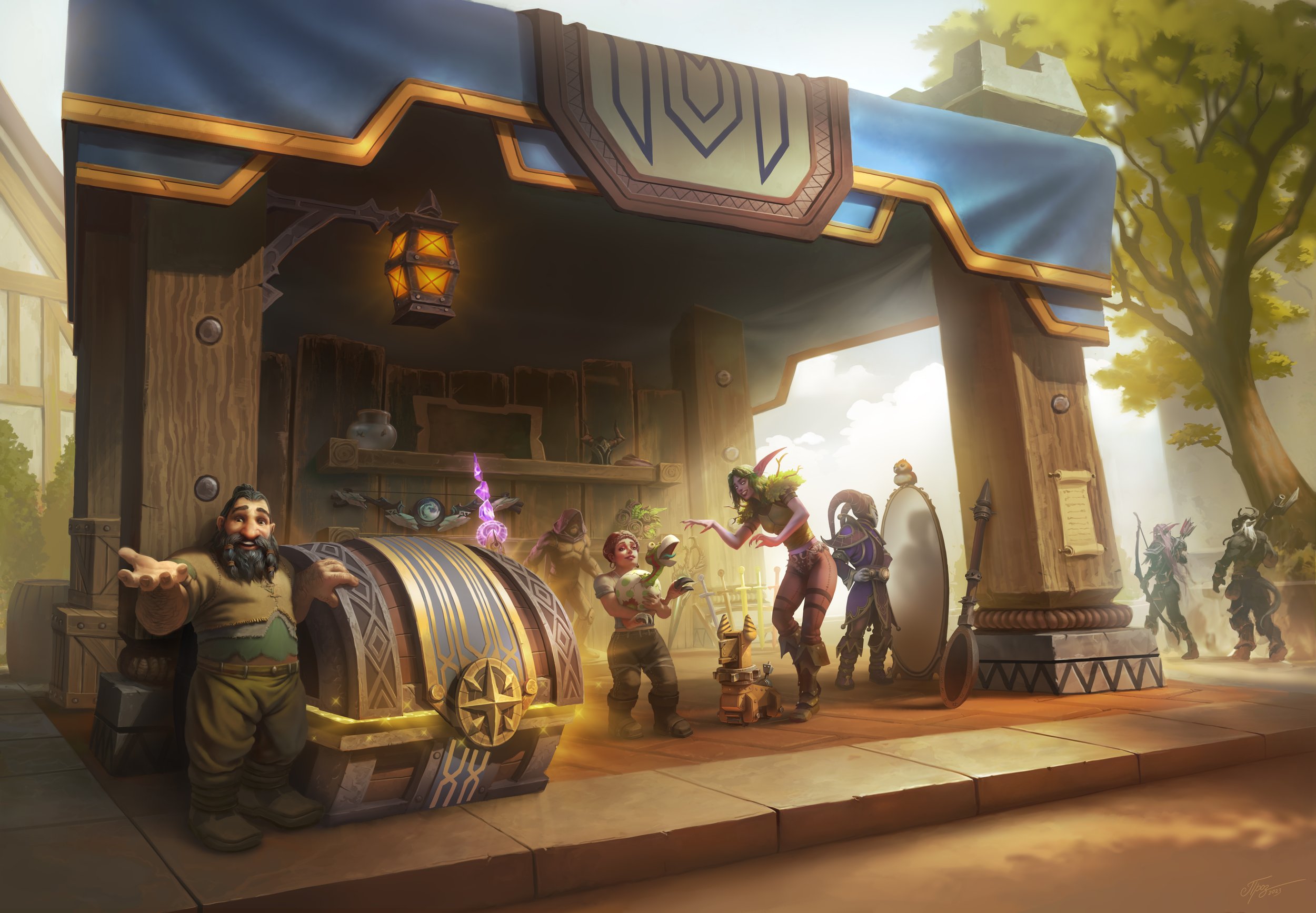Why So Many Teens Use Video Games to Meet Others
Traditional social spots are being replaced by video games.
This piece was featured as an essential topic in Psychology Today.

My first vivid memory is from an amusement park called Kiddieland, just west of Chicago. My siblings and I begged our parents to go nearly every weekend. I remember running around with other kids, waiting in line to ride the miniature Ferris wheel, soaring down tiny roller coasters, and pretending to drive cars as the single-rail track guided us in a gentle circle.
In middle school, my suburban community did not have many after-school activities. I frequented “The Firehouse,” a youth activity center filled with couches, music, pool tables, and lots of other students.
In my later teens, my friends would go to Borders to spend time together. We spent hours in the store’s oversized chairs, flipping through books, doing homework, and generally goofing off.
Kiddieland was replaced by a Costco and Borders was replaced by a clothing store. The Firehouse was replaced by a parking lot.
Local teens now have very few options for free or low-cost activities. Nearly every storefront is now a high-end clothing store or restaurant. In many cases, young people must now choose between a public park full of juvenile, under-sized playground equipment or paying to sit in a cafe.
The parents of my teen clients often scold them in my office for not spending time with friends after school. This confounds them: “There’s nothing to do.”
Parents rarely understand this. They suggest participating in the many affordable activities they fondly recall from their youth.
“Go to the park!" they suggest. "Ride your bike!”
“The park’s too far away and you said it’s too dangerous to ride my bike there.”
“Fine—go to an arcade or something!”
“There aren’t any arcades in town.”
“Just do something!” their parents growl.
Sadly, the children have a point. Most of them would love to hang out with peers after school, but cannot find anywhere to go.
Many of my clients are too young to drive or don’t have access to a car, and their parents are often too busy to drive them to scheduled events. Some of them can walk to art or martial arts classes, sports, and some extracurricular activities. However, many cannot afford to participate in any organized activities. When schools do offer appealing clubs, they typically meet one day a week, and never on weekends or during the summer.
Those who have friends from school go to each other’s houses, but may have little to do there. Small apartments in urban environments prohibit many activities. Their parents want them to go outside, then prohibit them from walking around town because of weather or safety concerns. Teens who have trouble making friends at school have nowhere else to make them.
Third Places
Sociologists call extracurricular spaces like The Firehouse and Borders “third places.” Third places are how we find community, build relationships, and support one another. They are crucial for our mental health. For example, studies show that third places reduce loneliness and improve overall well-being.
Unfortunately, third places are now rare. The roller skating rinks, bowling alleys, and movie theaters that their grandparents enjoyed closed decades ago. Even shopping malls are vanishing due to a combination of pandemic restrictions and online alternatives. Many local malls have implemented curfews and other restrictions to keep unaccompanied minors away.
Virtual Space
One of my clients, a college-aged student named Lev,* lives in central Illinois. He has not successfully made friends since moving to town a few years ago. He is shy and attends school virtually, but he has interests that could naturally facilitate friendships. He is a talented artist, enjoys video games and coding, and loves fantasy novels. He needed a third place where he could share space with others in a non-academic setting.
For people like Lev, I typically suggest an art class, a book club at the library, an anime or science fiction club at school, a coding class, volunteering, or other local events. But because I am not familiar with his town, I suggested we look online together to find a place for him to spend time.
I couldn’t find anything. A small art center offered classes he might enjoy, but each six-week session cost hundreds of dollars. Karate lessons would cost nearly a thousand dollars per semester. His local library only offered classes introducing older adults to computers. The closest park was an hour’s walk from his apartment and was usually empty.
Like many of my clients, Lev lives in a social desert.
The only “place” he could reliably access and afford was on the internet. When he played World of Warcraft (WoW), he had a social life. Anywhere his character wandered, he could chat casually with others. He had friends whenever he was online. And many other young people have similarly turned to video games as their third place. World of Warcraft became Lev’s virtual Firehouse.
Online spaces can be a positive and supportive place for people for whom socializing is difficult. Games like WoW facilitate social communication without pressure. Chatting with teammates does not require eye contact, physical proximity, reading body language, or navigating environmental distractions.
Gamers can also alter their appearance in most video games, which removes a barrier for trans people or those with body-related issues or low self-esteem. People who feel undesirable in real life can choose to look powerful, beautiful, or even non-human.
However, virtual communication is limited. Studies suggest that although online friendships are positive, they are often less meaningful than in-person ones.
The lack of third places, I argue, directly contributes to video game overuse. People need third places, and when physical ones are unavailable, they create digital ones. It makes sense to then spend time in those digital spaces, even when they are perceived as less socially acceptable.
What Can We Do?
Parents are understandably concerned to see their children in front of the computer for hours every day. They worry that their children are missing social opportunities and are not spending enough time with friends. Their kids likely agree with them; most would rather be out with friendly classmates too.
Instead of restricting their children’s online activity, I recommend parents help them find third places. Teenagers who have an engaging after-school hangout spot naturally spend less time gaming.
Communities can also help by creating public third places. Organizations like the Project for Public Spaces advocate for reclaiming areas for public use. My neighborhood in Chicago recently designated part of a street a community space, where city planners blocked all cars from entering, and installed lights, outdoor seating, and plants. This small one-way street is now a bustling spot for local events, live music, and a weekly farmer’s market.
People need third places to thrive. As they disappear, more of us will replace them with virtual spaces. It is our responsibility to build and protect these vital, human spaces so that everyone has the opportunity to build meaningful, in-person relationships.
*Lev's story is a combination of several real-world cases to preserve anonymity.
